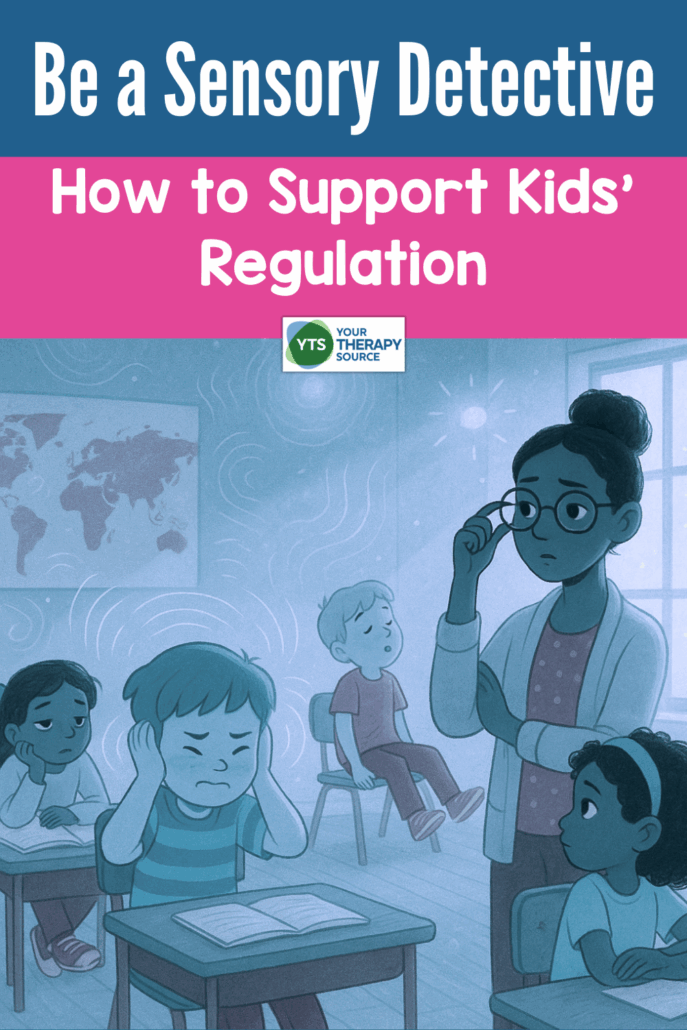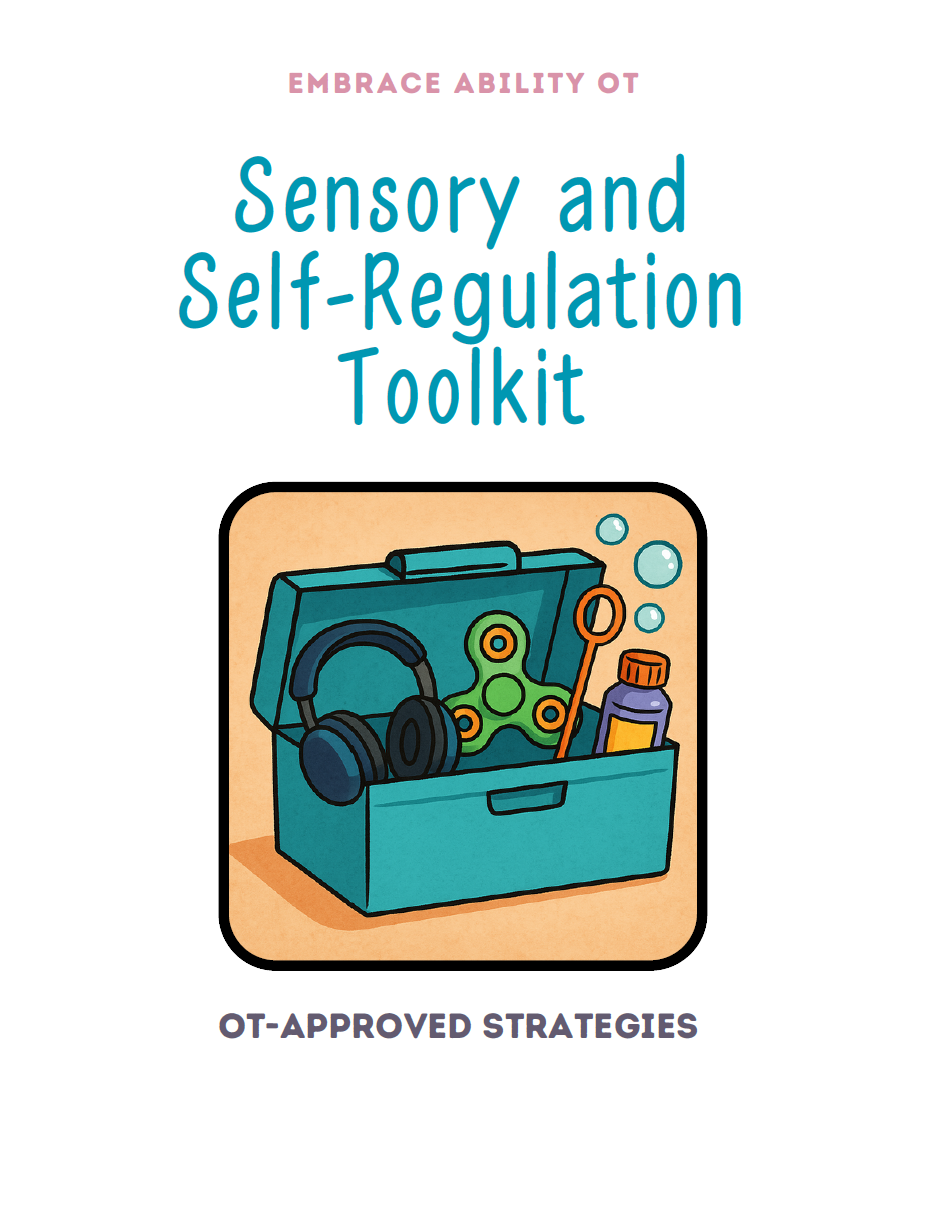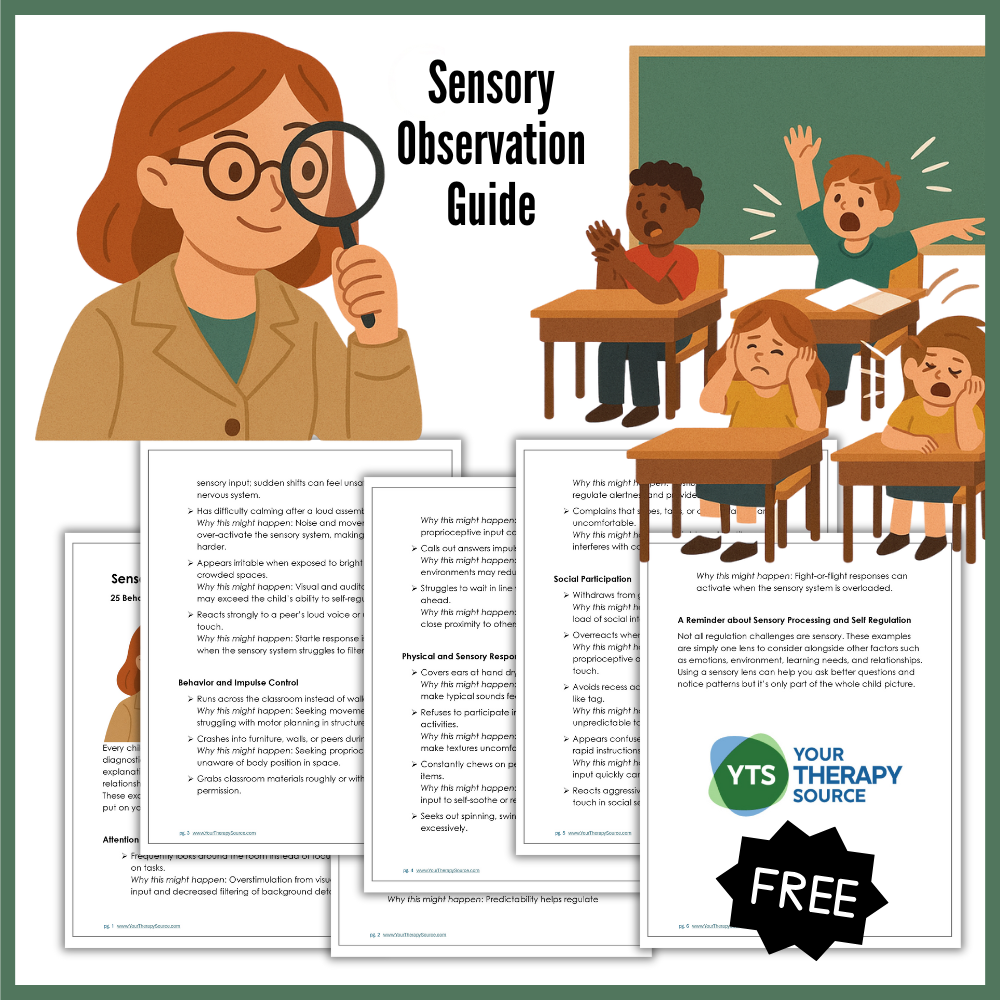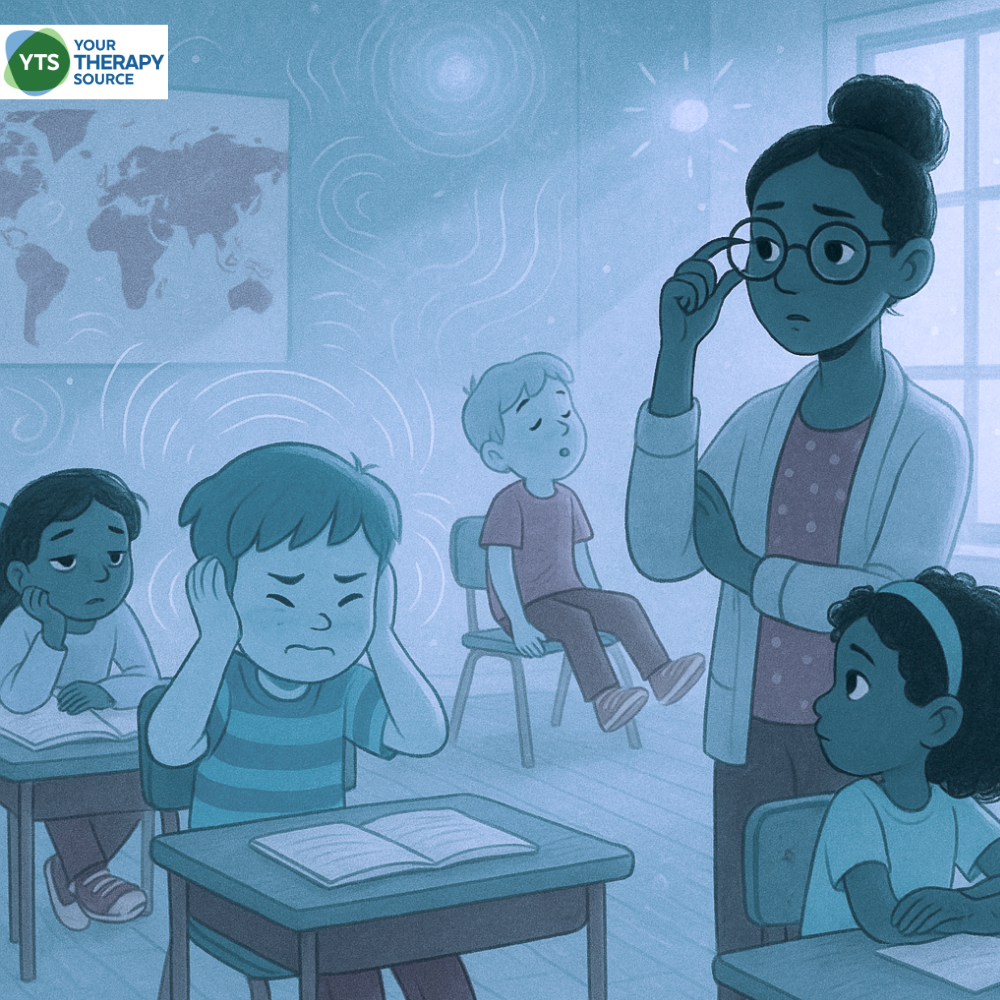The Connection Between Sensory Processing and Self-Regulation
When we think about self-regulation, we often picture a child’s ability to manage emotions, behavior, and attention. But there’s an important piece of the puzzle we can’t ignore: sensory processing. The way a child takes in, organizes, and responds to sensory information can influence how calm, focused, and flexible they are throughout the day. If their sensory system is overloaded or under-responsive, self-regulation often becomes more difficult. The connection between sensory processing and self regulation can be strong.
At the same time, behavior is always complex. Emotions, environment, relationships, and development all play a role. That’s why it helps to become a sensory detective, not to blame behaviors on sensory needs alone, but to consider whether sensory processing might be one piece of the puzzle. You can download a FREE observation guide at the end of this blogpost.

Why Sensory Processing Matters for Self-Regulation
Every sound, movement, touch, or visual detail a child experiences passes through the nervous system for processing.
- When sensory input is filtered and organized well, children can stay engaged, respond appropriately, and manage their emotions.
- When sensory input is overwhelming or disorganized, children may appear inattentive, impulsive, anxious, or dysregulated.
This process is called sensory filtering, and it is largely managed by two brain structures: the thalamus, which directs incoming information, and the reticular activating system, which helps regulate arousal and attention. Not every behavior is sensory-based. Understanding how sensory processing and self-regulation interact gives us another lens to support children more effectively.

Sensory and Self-Regulation Toolkit: OT-Approved Strategies for Kids
Sensory Challenges That Might Affect Self-Regulation
Every child is unique. The examples below are not a checklist to diagnose but possible clues that sensory processing could be influencing self-regulation. Some children may show only a few of these behaviors, while others may not display them at all. The goal is to notice patterns and ask better questions, always considering sensory as one factor among many. You can download 25 total examples at the bottom of this post.

Attention and Focus Sensory Challenges
- Frequently looks around the room instead of focusing on tasks.
Why this might happen: Overstimulation from visual input and decreased filtering of background details. - Struggles to ignore background chatter or hallway noise.
Why this might happen: Difficulty with auditory filtering, so all sounds compete for attention. - Shifts in the chair, taps pencils, or rocks constantly to stay engaged.
Why this might happen: Seeking proprioceptive or vestibular input to stay alert and organized.
Sensory Based Emotional Reactions
- Melts down quickly when asked to stop a preferred activity.
Why this might happen: Difficulty shifting states due to sensory transitions and regulation of arousal. - Has difficulty calming after a loud assembly or recess.
Why this might happen: Noise and movement may over-activate the sensory system, making recovery harder. - Appears irritable when exposed to bright lights or crowded spaces.
Why this might happen: Visual and auditory overload may exceed the child’s ability to self-regulate.
Sensory Patterns, Behavior and Impulse Control
- Runs across the classroom instead of walking calmly.
Why this might happen: Seeking movement or struggling with motor planning in structured spaces. - Crashes into furniture, walls, or peers during transitions.
Why this might happen: Seeking proprioceptive input or unaware of body position in space. - Calls out answers impulsively during lessons.
Why this might happen: Over-arousal in noisy environments may reduce inhibitory control.
Physical Sensory Responses
- Covers ears at hand dryers, fire drills, or cafeteria noise.
Why this might happen: Auditory hypersensitivity may make typical sounds feel painful or overwhelming. - Constantly chews on pencils, shirts, or other non-food items.
Why this might happen: Seeking oral proprioceptive input to self-soothe or regulate. - Complains that shoes, tags, or certain fabrics are uncomfortable.
Why this might happen: Heightened tactile sensitivity interferes with comfort and focus.
Social Participation Sensory Experiences
- Withdraws from group games or collaborative projects.
Why this might happen: Overwhelmed by the sensory load of social interactions. - Overreacts when bumped into by peers.
Why this might happen: Tactile sensitivity or poor proprioceptive awareness heightens responses to touch. - Appears confused or unresponsive when peers give rapid instructions.
Why this might happen: Difficulty processing auditory input quickly can cause missed social cues.
Becoming a Sensory Detective Regarding Self Regulation
Looking at behavior through a sensory lens does not mean jumping to conclusions. It means asking better questions:
- Is the child seeking or avoiding certain types of input?
- Are regulation difficulties worse in specific environments, such as the cafeteria, gym, or transitions?
- Does the child recover quickly, or does it take a long time to calm down?
When we approach children this way, we move from seeing “misbehavior” to considering possible sensory needs while always remembering that sensory is only one piece of a bigger picture.

Raising Self Regulated Kids Issue #1 – The Science Behind Self Regulation
Tools to Support Sensory and Self-Regulation
By combining sensory strategies with self-regulation supports, you can create a calmer, more successful learning environment. Supporting sensory processing builds the foundation for stronger self-regulation and ultimately, for success in school, play, and everyday life.
The Sensory and Self-Regulation Toolkit includes practical activities, visuals, and printables to help you:
- Identify sensory triggers that impact regulation
- Provide proactive strategies for the classroom or home
- Teach children to recognize and manage their own sensory needs
Download Your FREE Copy of the Sensory Processing and Self Regulation Observation Guide
Want even more examples? Sign up for our free printable with 25 behaviors and possible sensory connections to help you put your sensory detective skills into action.



